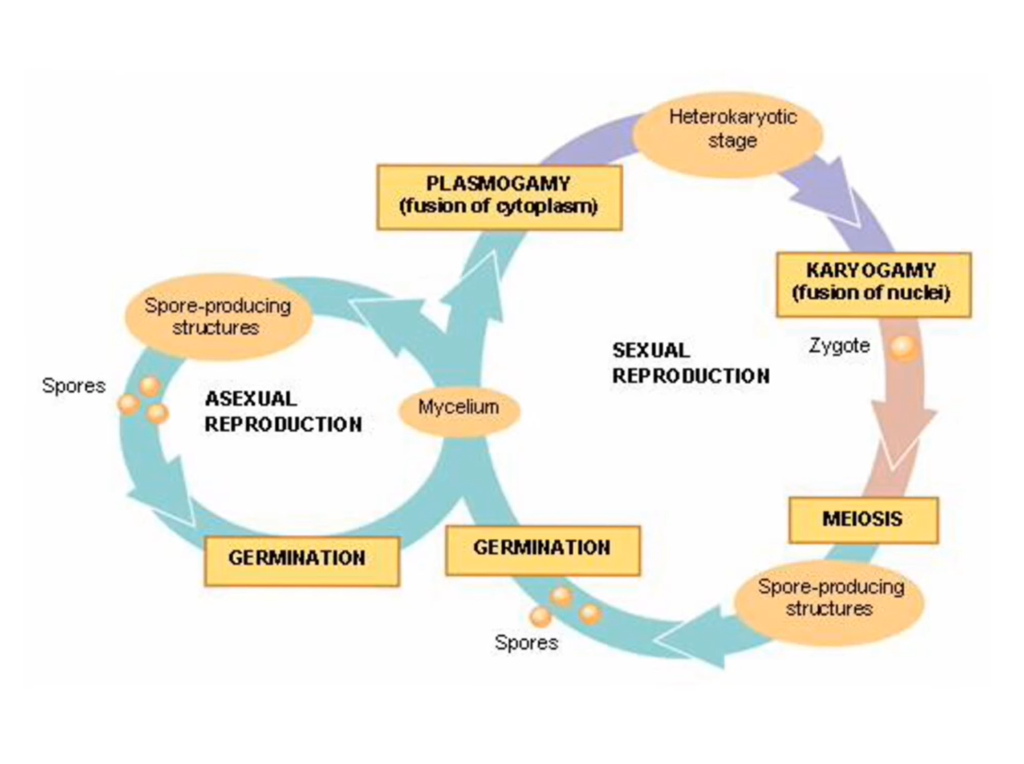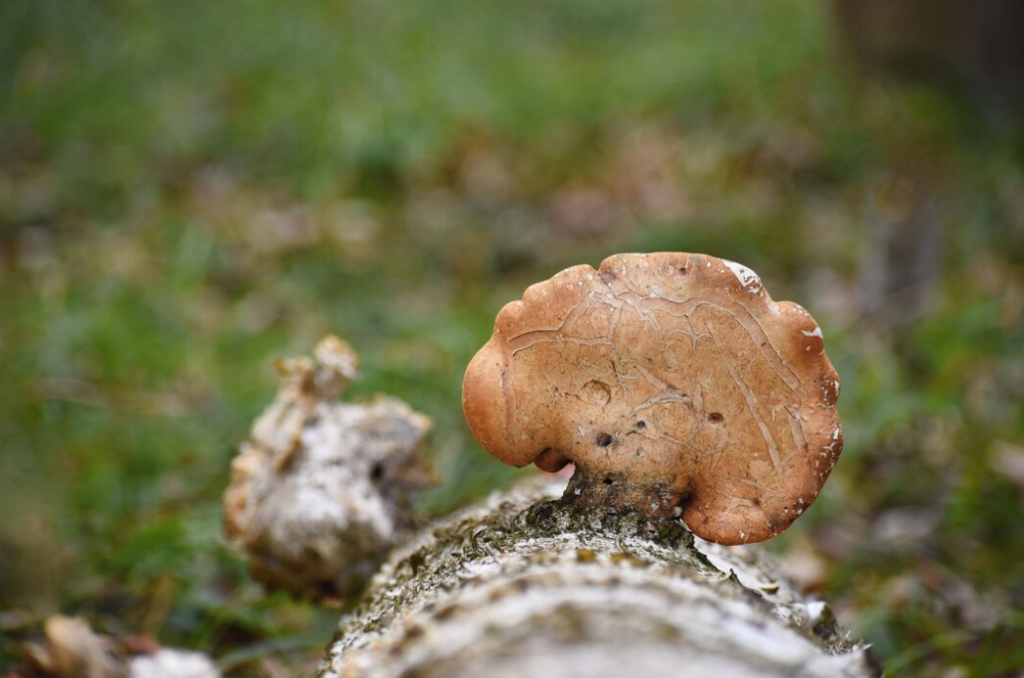Fungi, an essential and diverse group of organisms, have evolved a myriad of methods to reproduce and ensure their survival. Their reproduction strategies are multifaceted, ranging from asexual to sexual means, and understanding them offers insights into their ecological significance and evolution.
Sexual Reproduction in Fungi
| Aspect | Mating Types | Fruiting Bodies | Spore Formation |
|---|---|---|---|
| Description | Instead of male and female, fungi have mating types. | Fungal mating leads to the formation of fruiting bodies. | Spores are produced through a process called meiosis. |
| Variety of Mating Types | Fungal species can exhibit various mating types. | Fruiting bodies serve as protective chambers where spores develop. | Meiosis ensures genetic diversity in spores. |
| Compatibility | Compatible mating types lead to fungal mating. | Fruiting bodies release mature spores into the environment. | Spores inherit genetic material from both parent fungi. |
| Dissemination | The aim of spores is to find a conducive environment for growth. | Spores travel by wind or water to find suitable conditions. | Germinating spores grow into new fungal organisms. |
| Importance | Essential for continuation of the species. | Critical in the life cycle of many fungi. | Ensures adaptability and resilience of fungal species. |
Mating Types
In the realm of fungi, the concept of reproduction diverges significantly from what we commonly observe in the animal kingdom. Instead of the traditional male and female classifications we’re familiar with in animals, fungi operate with what are known as mating types.
- Each fungal species could exhibit a variety of these mating types. For instance, some might possess just a binary distinction, akin to male and female, while others have a broader spectrum of types;
- The intriguing part is when two fungi of compatible mating types encounter one another;
- This compatibility sets the stage for mating, eventually leading to the production of offspring, ensuring the continuation of the species.
Fruiting Bodies
- The process of fungal mating culminates in the formation of fruiting bodies;
- These aren’t fruits as we traditionally understand them, but specialized structures that serve a pivotal role in the life cycle of many fungi;
- The primary function of these fruiting bodies is to act as protective chambers where spores, akin to seeds in plants, develop and mature;
- Once these spores are ready, the fruiting bodies release them into the environment.
Among the myriad of fungal structures, some, like the caps of mushrooms, have become iconic and are easily recognized as representatives of this vast and diverse kingdom.
Spore Formation
A critical phase in the fungal reproductive cycle is the formation of spores. Particularly in the context of sexual reproduction, these spores are products of a cellular division process termed meiosis.
- Meiosis is not just a simple division, but a mechanism to ensure genetic diversity, which is vital for the adaptability and resilience of species;
- During this process, spores inherit a combination of genetic material from both parent fungi;
- Endowed with this genetic mosaic, spores are equipped to journey afar, often traveling vast distances, borne by wind or water;
- Their ultimate aim is to find a conducive environment;
- Upon finding such a locale, these minute entities germinate, growing and developing into a new fungal organism, thus perpetuating the cycle of life in the fungal kingdom.

Asexual Reproduction in Fungi
| Aspect | Sporangia | Conidia | Budding |
|---|---|---|---|
| Description | Protective sacs for spore formation. | Spores formed directly on filamentous structures. | Parent cell gives rise to a bud that becomes independent. |
| Genetic Identity | Spores are genetically identical to the parent. | Conidia are also genetically identical to the parent. | Budded offspring shares genetic material with the parent. |
| Dispersal | Spores are released when sporangia rupture. | Conidia are easily detached from specialized structures. | Buds mature into independent organisms. |
| Prevalence | Common method among various fungi. | Common in fungi, especially in nutrient-rich environments. | Particularly prevalent in yeasts. |
| Efficiency | Efficient method for rapid spore production. | Provides a straightforward means of spore release. | Allows for swift proliferation, especially in nutrient-rich environments. |
| Typical Use | Suitable for various fungi. | Common in numerous fungal species. | Predominant method among yeasts. |
Asexual reproduction is a mode through which fungi can reproduce and proliferate without the need for mating or the fusion of genetic material from two distinct parent fungi. This method offers a swift and efficient way for fungi to increase their population, especially in environments where conditions are favorable and stable.
Sporangia
One of the primary methods fungi employ for asexual reproduction is through the formation of structures called sporangia. Think of sporangia as protective sacs or chambers, meticulously designed to house and nurture spores.
- These spores represent the next generation and are genetically identical to their parent;
- When the time is ripe, often triggered by specific environmental cues, the walls of the sporangia rupture;
- This process releases a multitude of spores, dispersing them into the surroundings, where they await the right conditions to grow and establish a new fungal colony.
Conidia
- Differing from sporangia, conidia represent another mode of asexual reproduction in fungi;
- These spores have a distinct characteristic: they are not encapsulated within a protective sac;
- Instead, conidia form directly on specialized filamentous structures called hyphae;
- More specifically, they emerge from specialized extensions termed conidiophores.
These spore-bearing structures jut out, presenting conidia to the environment, allowing for easy detachment and dispersion when conditions permit.
Budding
- While sporangia and conidia might dominate discussions on fungal asexual reproduction, budding is another intriguing method, especially prevalent among yeasts;
- In this fascinating process, a parent fungal cell gives rise to a tiny outgrowth, or “bud.”;
- This bud is not just a passive protrusion but a dynamic entity, gradually increasing in size by absorbing nutrients and replicating its internal components;
- Once mature, this bud undergoes a separation process, detaching from its parent to live as a fully independent organism.
This method allows for rapid proliferation, especially in nutrient-rich environments, making yeasts remarkably successful in various habitats.
The Role of the Environment
The environment, with its multifaceted conditions and ever-changing dynamics, holds immense sway over the reproductive choices fungi make. It isn’t just a backdrop against which these organisms thrive but a significant actor influencing their life cycles and survival strategies.
In environments characterized by stability and an abundance of nutrients, fungi often find themselves in a situation of luxury. These conditions allow them to focus on rapid proliferation. In such conducive surroundings, asexual reproduction becomes the method of choice for many fungal species. This mode of reproduction enables them to produce offspring at an accelerated pace without the need to navigate the intricacies of mating. No need to find a compatible partner, no need for genetic mixing – just swift and straightforward duplication. This allows fungi to capitalize on the favorable conditions, quickly colonizing available niches.
Conversely, when the environmental tables turn, presenting challenges like resource scarcity, competition, or drastic changes in conditions, fungi adopt a more strategic approach. In these unpredictable or harsh terrains, the advantages of asexual reproduction are overshadowed by the benefits of sexual reproduction. While it might seem counterintuitive to opt for a method that is slower and involves the complexities of mating, there’s a deeper game at play. Sexual reproduction shuffles the genetic deck, creating offspring with varied genetic compositions. This genetic diversity is a boon in uncertain times. It ensures that, among the diverse offspring produced, some might possess the genetic configurations that allow them to thrive in the new conditions, ensuring the continuation of the species.
In essence, the environment isn’t just a passive stage for fungi but an active influencer, guiding their reproductive decisions based on the challenges and opportunities presented. This intricate dance between fungi and their surroundings underscores the adaptability and resilience of these fascinating organisms.

The Evolutionary Significance of Fungal Reproduction
The intricate mechanisms of fungal reproduction are not merely about perpetuating their lineage; they offer a fascinating glimpse into the evolutionary strategies that have allowed fungi to colonize virtually every corner of our planet. At the core of this evolutionary success is the ability of fungi to adapt to changing environments, resist threats, and exploit new ecological niches. Through both sexual and asexual reproduction, fungi have developed a genetic toolkit that maximizes their adaptability.
Sexual reproduction, with its shuffling of genetic material, ensures a reservoir of genetic diversity. This is particularly invaluable when environmental conditions change or new challenges arise. A genetically diverse population stands a better chance of having some individuals with the traits necessary to survive and thrive under new conditions. Over time, these advantageous traits become more common, driving evolutionary change.
On the other hand, asexual reproduction allows for rapid colonization of favorable environments. By producing genetically identical offspring, fungi can quickly exploit a resource-rich niche, ensuring their dominance before competitors arrive. Furthermore, some fungi can switch between sexual and asexual modes depending on environmental cues, a versatility that provides them with an evolutionary edge.
In essence, the multifaceted reproductive strategies of fungi are testament to nature’s brilliance. They underscore how organisms can evolve complex life cycles to navigate the challenges and opportunities of their environments, ensuring not just survival but evolutionary success.
Conclusion
Fungi, with their array of reproductive strategies, showcase nature’s adaptability. Their ability to reproduce both sexually and asexually allows them to thrive in diverse conditions and play integral roles in ecosystems around the world. As researchers delve deeper into the world of fungi, it becomes clear how these remarkable organisms have evolved over time to ensure their continuity and growth. As we explore the fascinating world of fungi and their remarkable array of reproductive strategies, it’s essential to delve deeper into their structural intricacies. For a comprehensive understanding of how fungi’s structure supports their reproductive adaptability, be sure to check out our dedicated article on ‘The Structure of Fungi.’

